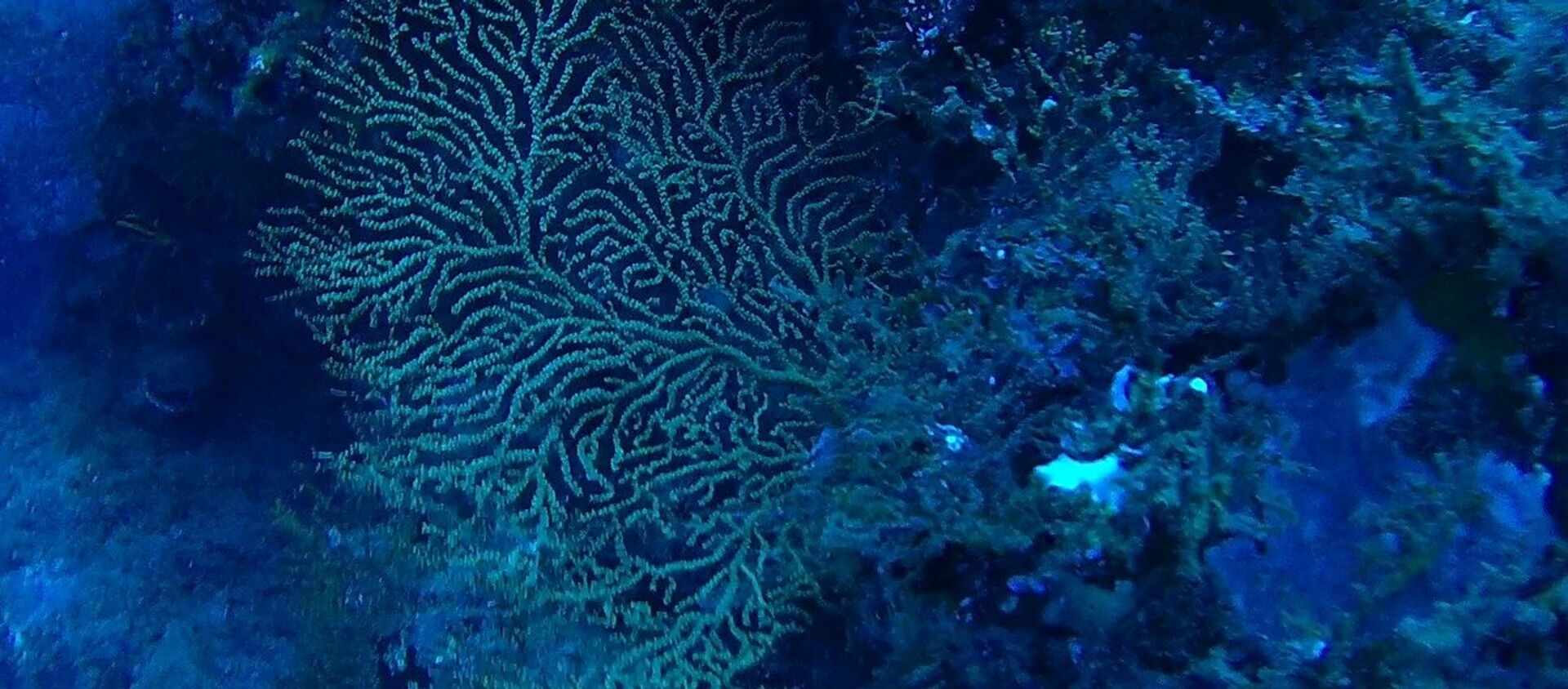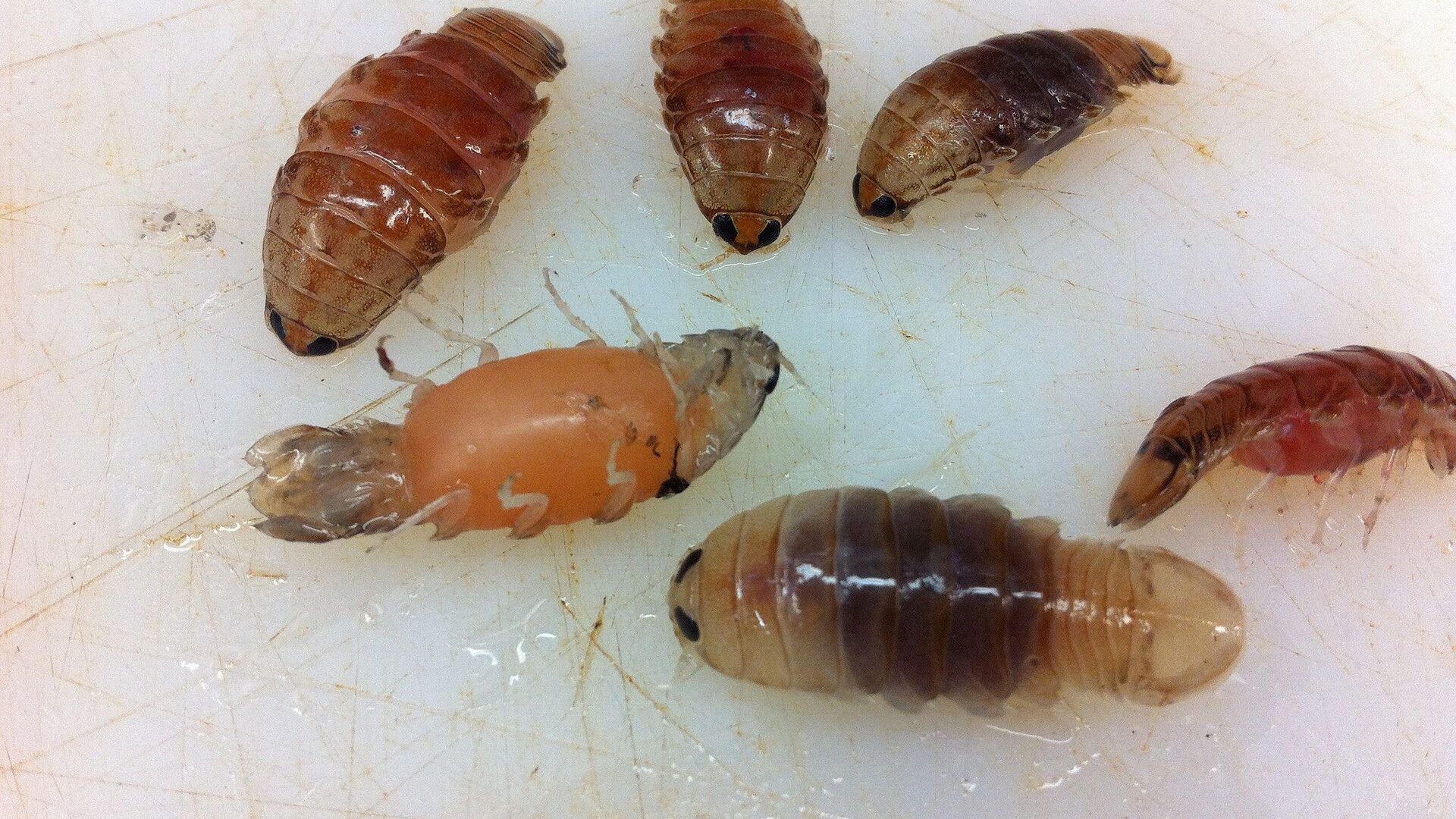https://sputnikglobe.com/20220816/a-new-isopod-was-just-discovered-and-it-is-giant-1099635246.html
A New Isopod Was Just Discovered, and it is Giant
A New Isopod Was Just Discovered, and it is Giant
Sputnik International
Researchers estimate that there could be more than 700,000 marine species living in the ocean, including roughly 65,000 unknown species that have been... 16.08.2022, Sputnik International
2022-08-16T03:16+0000
2022-08-16T03:16+0000
2023-04-21T10:42+0000
science & tech
gulf of mexico
deep-sea creature
https://cdn1.img.sputnikglobe.com/img/105626/03/1056260337_0:189:2048:1341_1920x0_80_0_0_d8126cf0741ef3375e4a5de05cb986ca.jpg
A new deep sea creature has been discovered in the Gulf of Mexico.The newly identified bathynomus yucatanensis is a giant isopod, a type of crustacean that scavenges for food on the ocean floor. It has a segmented body and fourteen legs, much like its smaller relatives, the terrestrial isopod crustacean, the woodlouse, also known as pillbug, roly-poly and dozens of other nicknames.However, this new species is much larger. Woodlouses tend to be around 10mm long, or about 4/10ths of an inch. By contrast, the newly discovered bathynomus yucatanensis is about a foot long.The increase in size is attributed to deep-sea gigantism, an evolutionary track that leads to larger versions of species, like the giant squid. The same phenomenon can happen in reverse, as some believe happened with the smaller Borneo elephant, also known as the Pygmy elephant and the prehistoric dwarf elephant.Researchers from Taiwan, Japan and Australia described the new species and identified it as distinct from the bathynomus giganteus, a previously discovered giant isopod found in tropical regions of the Atlantic ocean.They determined that this species has unique characteristics, including a yellow color and slender proportions. DNA also backed up their hypothesis that the new species is unique.The researchers noted that there may be more discoveries to find on the ocean floor, including more giant isopods.
https://sputnikglobe.com/20201231/researchers-discover-12-new-deep-sea-species-in-multi-year-study-of-atlantic-waters-1081615536.html
gulf of mexico
Sputnik International
feedback@sputniknews.com
+74956456601
MIA „Rossiya Segodnya“
2022
News
en_EN
Sputnik International
feedback@sputniknews.com
+74956456601
MIA „Rossiya Segodnya“
Sputnik International
feedback@sputniknews.com
+74956456601
MIA „Rossiya Segodnya“
science & tech, gulf of mexico, deep-sea creature
science & tech, gulf of mexico, deep-sea creature
A New Isopod Was Just Discovered, and it is Giant
03:16 GMT 16.08.2022 (Updated: 10:42 GMT 21.04.2023) Researchers estimate that there could be more than 700,000 marine species living in the ocean, including roughly 65,000 unknown species that have been collected but not yet identified or described. Roughly 226,000 ocean dwelling species have been both identified and described.
A new deep sea creature
has been discovered in the Gulf of Mexico.
The newly identified bathynomus yucatanensis is a giant isopod, a type of crustacean that scavenges for food on the ocean floor. It has a segmented body and fourteen legs, much like its smaller relatives, the terrestrial isopod crustacean, the woodlouse, also known as pillbug, roly-poly and dozens of other nicknames.
However, this new species is much larger. Woodlouses tend to be around 10mm long, or about 4/10ths of an inch. By contrast, the newly discovered bathynomus yucatanensis is about a foot long.
The increase in size is attributed to deep-sea gigantism, an evolutionary track that leads to larger versions of species, like the giant squid. The same phenomenon can happen in reverse, as some believe happened with the smaller Borneo elephant, also known as the Pygmy elephant and the prehistoric dwarf elephant.

31 December 2020, 01:18 GMT
Researchers from Taiwan, Japan and Australia described the new species and identified it as distinct from the bathynomus giganteus, a previously discovered giant isopod found in tropical regions of the Atlantic ocean.
They determined that this species has unique characteristics, including a yellow color and slender proportions. DNA also backed up their hypothesis that the new species is unique.
The researchers noted that there may be more discoveries to find on the ocean floor, including more giant isopods.


